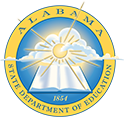This lesson plan includes several hands-on, inquiry-based lab activities exploring the concepts of osmosis and diffusion. The lesson plan is divided into three modules. First, the teacher will demonstrate osmosis and diffusion using gummy bears, salt, celery, food coloring, and hot and cold water. Next, students will participate in a hands-on lab activity that will demonstrate diffusion using various concentrations of corn starch and Lugol’s solution. Lastly, students will demonstrate the process of osmosis using dialysis tubing, sucrose solution, cornstarch, phenolphthalein, ammonia, vinegar, and universal indicator solution.
